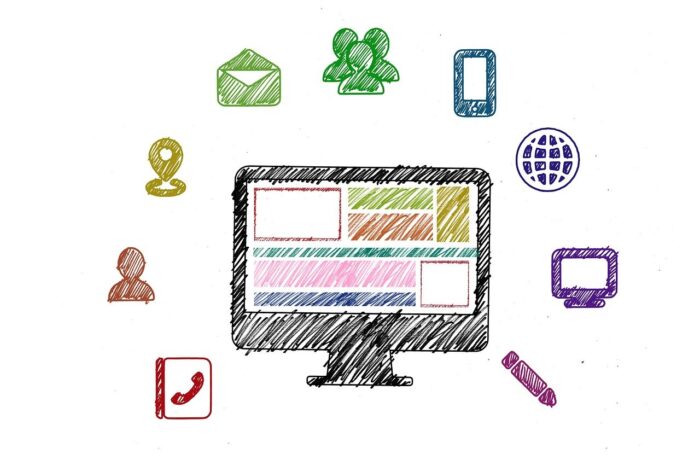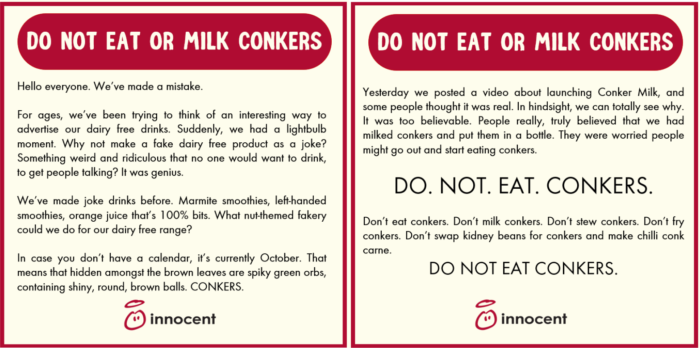Brand language is something you do, not something you have, says Alex Goldstein of Schwa. But why is it so important? And how can you ensure the language you use is consistent across the whole business? Read on to find out.
Most companies have a ‘tone of voice’ and speak highly of its value. We surveyed 190 global marketing, comms and brand directors across Europe, Asia, North America and Australia, and 93% said tone of voice can affect the bottom line.
Yet, when you drill down into who’s actually using it, the picture gets a lot murkier. For too many brands, tone of voice is a nice-to-have, used only by a handful of people (usually the PR team).
But that’s not going to cut it. It’s time to rescue your guidelines from the dusty virtual drawer they’ve sat in since you wrote them: your business could depend on it.
3 reasons why tone of voice matters
1. It builds your culture and creates consistency

Our research confirms that 79% of global brand and comms teams love having a tone of voice because it creates consistency. Great. But then, how many marketers were confident that most of their own people (at least 75%) were using their tone? Just 9%.
So how can your tone of voice sound the same everywhere if only some people are using it?
What’s more, in an ideal world, tone and culture form a virtuous circle: you are how you speak. Think about the shift lots of companies have made from talking about ‘human resources’ to talking about ‘our people’. One certainly inspires a greater sense of loyalty than the other.
Here’s another way to look at it: a tone of voice isn’t something you have, it’s something you do. That’s why you all need to be in it together.
2. Your customers notice more than you think
We’ve asked ourselves if a distinctive tone is even worth the effort. While our experiment pitting utility company tones against each other had its limitations, it did strongly suggest the customer is always observant.
There’s a bit of behavioural science to it, too. Suppose your billboard ads are a thing of beauty, but your more functional emails read like customer service lorem ipsum. When writing isn’t clear, it adds friction to the customer experience. That makes it less likely you’ll get them to do what you want them to do.
Above all, a robust tone of voice helps you sound like yourself in a crisis. Many brands lurched off tone when coronavirus hit: our research showed 46% became more ‘soft and fluffy’ while 37% got very formal.
But even without the context of a global health crisis, you have to apologise sometimes. If you’re not sure it’s possible to say ‘sorry’ on brand, take inspiration from Innocent Drinks’ conker milk prank.

3. It’s just good business sense
Almost everyone we asked believes tone of voice has an impact on the bottom line: from the most sceptical Swedish marketers (87%) to the true believers of the UK (97%). Thing is: it does. We’ve seen that in our work – for example, when just four rewrites saved Sky 14,000 calls to their call centre.
We also know that companies with strong brands are worth more than those without – and a consistent tone of voice is an essential part of that. In a world where more and more brands claim to be ‘disruptive’, those that really commit to their tone, like Oatly, can actually attribute some of their success to it.
And, not to harp on about 2020, but you should know that strong brands might also be more resilient in a crisis.
Sign up to the GMA newsletter to get more best practice guidance and insight from the best practitioners around the globe.
So, how do you get people to use your tone of voice all the time
1. First, check you really have a tone
 Fish those guidelines out and take a closer look. When was it written? Who was involved in writing it?
Fish those guidelines out and take a closer look. When was it written? Who was involved in writing it?
When we run workshops to define a tone of voice, we always ask people from all around the business to join in: legal, HR, finance. Because the IKEA effect tells us that when you help build something, it’s worth more to you.
Next: are your written guidelines fit for purpose? They should have easy-to-understand principles and clear before-and-after examples. If they’re littered with vague adjectives – ‘we’re bold’ – but lack practical techniques to explain how to achieve that feeling, they’re probably not helping people get or use the tone.
If all of those check out, do a quick spot check: can people sum up your tone in a nutshell? If not, you might have an awareness problem, a training problem, or both.
2. Tell everyone about your tone
Launch events, videos, internal comms and, most importantly, sponsorship from a senior leader make it clear that tone is important to the business. An appeal from authority can do wonders for helping your tone of voice stick.
And of course, ditch the drawer: put your guidelines on your intranet, leave booklets on people’s desks, send nudgy emails, and make a song and dance about the success stories.
3. Keep training people: it’s not one and done
 You should train everyone if you can, but not all teams need the same level of input. Work out if they need to ‘get’ the tone, use it or master it. Then split the tailored sessions into digestible chunks, with plenty of hands-on practice.
You should train everyone if you can, but not all teams need the same level of input. Work out if they need to ‘get’ the tone, use it or master it. Then split the tailored sessions into digestible chunks, with plenty of hands-on practice.
Training is always stickier if it’s done little and often – that’s down to something called the spacing effect.
Remember you’re also training people to reinforce the tone for each other. So explain that it’s important to know if you’re changing what you say (content), or how you say it (tone). Most people who aren’t full-time writers won’t have split feedback like this before – but it really helps.
Once you’ve got the ball rolling, book refresher sessions at three, six and twelve months.
Give ownership to your teams
Often, you’ll turn to tone of voice specialists like us to shape your training. You can also take a ‘train the trainer’ approach, and build a bespoke programme led by your own people.
But it’s not only about the trainers. No matter what your budget or headcount, there will be people from all over the business who are excited about making this work. They’re your champions. Give them the time and resources to be good ones: can they run regular writing clinics? Host town-hall sessions? Have a quarterly champs get-together to sort out bigger issues? It’s an add-on to their day job, so don’t forget to reward them.
Finally, don’t forget to celebrate success. Numbers help enormously. So A/B test some of your comms, like customer emails or job descriptions, and then share the results widely. When you’ve proved you can get more people clicking or speed up hiring, everyone wants to give it a go.
Image by Gerd Altmann from Pixabay









Leave your thoughts